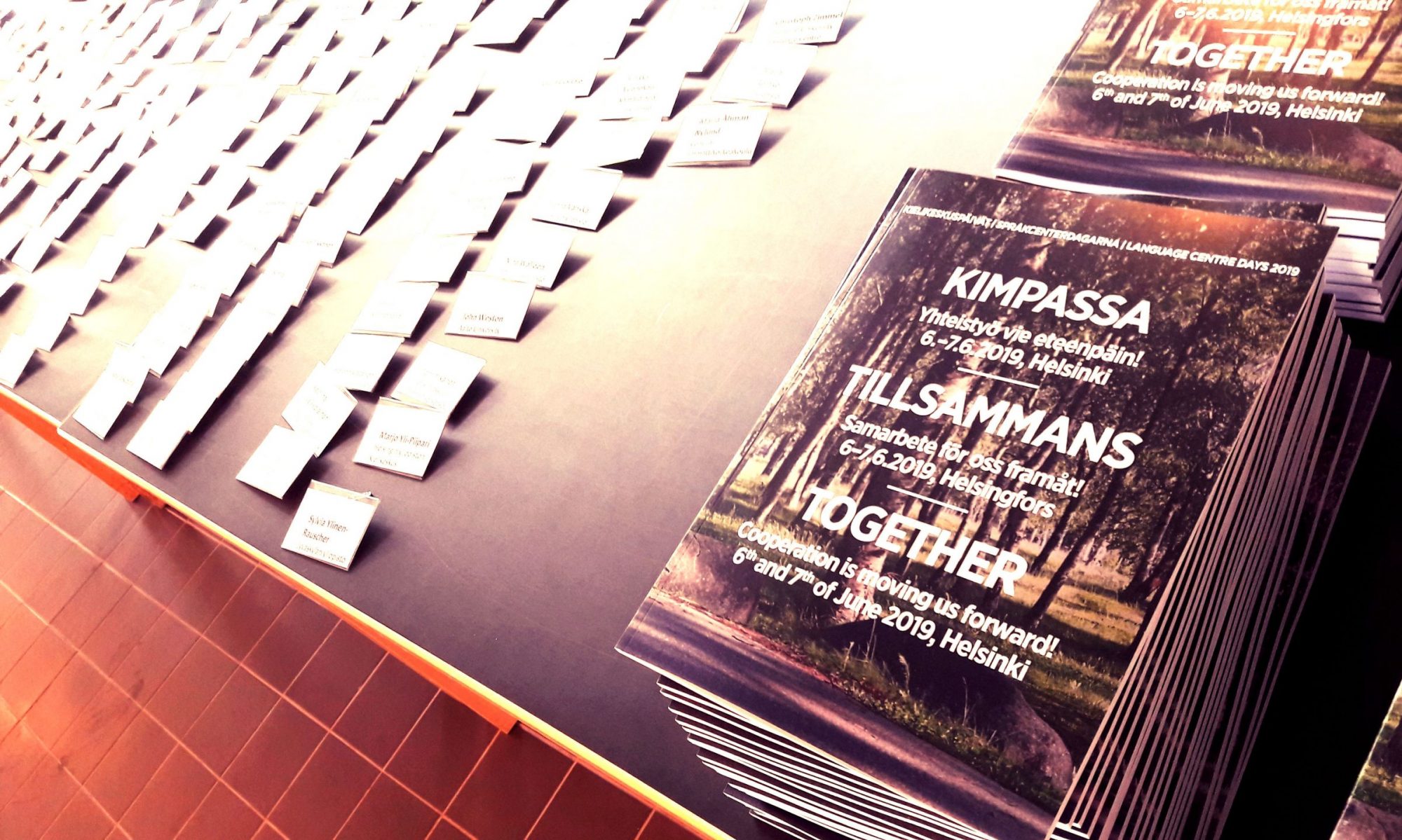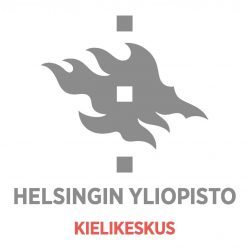A book with a succinct Finnish title occupies one of the prime spots in my bookcase. Its light-grey covers feature two words in white letters: Kustannustoimittajan kirja (‘Editor’s book’). In recent years, I have rarely opened this book, but I still keep it in the same place because, for instance, its checklists for the last round of proof-reading are useful not just for professional editors, but also for the creators of common learning material not intended for publication.
When I began to work at the Language Centre, I soon found out that, in addition to our other activities, we also had our own publication series with the apt title: Language Centre Publications. This series now includes eight volumes, of which three are doctoral theses completed by Language Centre staff and the others are collections of articles related to the Language Centre’s work. The first volume was Leena Karlsson’s 2018 doctoral thesis on autonomous language learning, while the first co-authored collection of texts was issued in 2011 on the theme of out-of-classroom language learning. Since then, a new volume has been published either annually or every few years.
The publication series is closely connected to the work of the Language Centre as well as the teaching and learning taking place here. For example, the compilations of articles have explored not only out-of-classroom language learning, but also the changing role of the Language Centre as well as advising and counselling in language learning. The compilations on the last two themes related to the Language Centre’s education on university teaching and learning, and most of the authors were inspired to write their articles by educational research and development projects. The most recent volume, published in 2019, focuses more widely on communication and language studies and includes several texts on the acquisition of communication skills in the native language.
Publishing in the series is fairly easy, but all of the articles are internally peer reviewed by at least two people. And best of all, the article compilations are also edited. In other words, they undergo a multi-stage process of editing, which is also apparent in the end result. The volumes issued as part of the publication series provide an excellent overview of the topics occupying the minds of Language Centre staff and of the ways in which they develop their work. Writing an article for the series is a great way not only to share one’s expertise, but also to describe the Language Centre’s operations.
From the outset, the publication series has been multilingual, making the volumes popular gifts when Language Centre staff visit partner universities outside Finland. Consequently, the series has continued to be published in print alongside an online publication.
How did I end up editing the publication series? When the articles for the seventh volume had been received for editing, it was discovered that new editors were required. I expressed an interest and have been able to continue with the most recent volume. I consider myself lucky because editing this type of series is incredibly rewarding. Although I do the editing alongside my other work, and inevitably on its terms, I have learned much about my colleagues’ work when editing the articles. When reading interesting reports on development, my own ideas are refined without me so much as noticing. And the book that takes pride of place in my bookcase has again come in handy when I have double-checked what, for example, should be placed on the title page of a publication.
However, the editing process is most fruitful when it is collaborative. So I would like to give the final word to Heini Lehtonen and Sinikka Karjalainen, my fellow editors of the ninth volume. In these times of the coronavirus pandemic, I interviewed them digitally. Heini provided a fresh and positive perspective on our publication series:
“What I particularly appreciate about the concept and editing of the Language Centre’s publication series is that it is so closely connected to the Language Centre’s teaching and the development of teaching. We investigate our own work, write about it, give feedback to our colleagues and receive feedback from them. The whole process contributes to and promotes a sense of community, collegiality and expertise.”
Our veteran Sinikka was involved in the editing process for the third time. Sinikka, what has made you return to the editor’s chair several times?
“One of the most interesting aspects of the editing process is following how an article develops from what is occasionally just an idea to the final version. Although the process is sometimes frustrating to both the editors and the authors, the final product is always a positive surprise: look how good it is! In addition, working and collaborating with the other editors is rewarding: we learn from each other and at some point we get to rejoice when the job is done. And it is a special moment when you gently open the final online version or the book hot off the press for the first time.”
We hope that you will enjoy the latest instalment of the publication series!
Text: Heidi Mäkäläinen
Find out more about the Language Centre’s publication series

